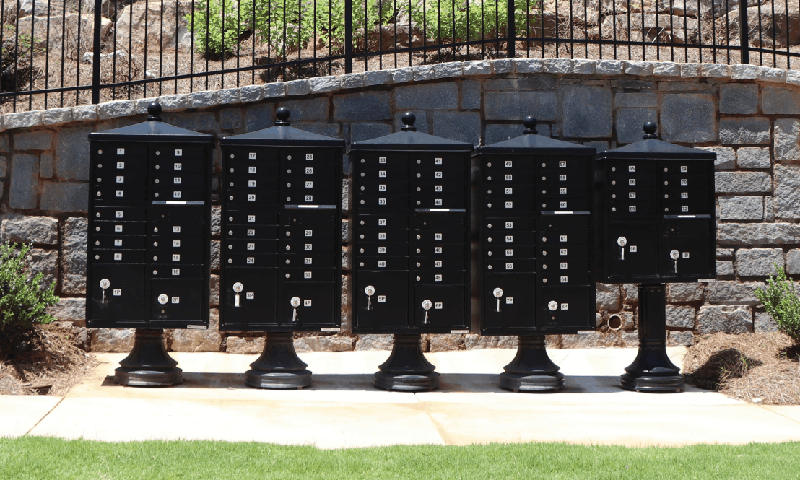
This article was written by our valued partner Budget Mailboxes. To learn more about the industry leading services they provide to community management companies nationwide, visit: www.budgetmailboxes.com
More about Cluster Mailboxes
Cluster mailboxes have long been a fixture of apartment buildings and commercial buildings. You’ve probably used a cluster mailbox if you’ve ever lived in an apartment or condo building. More and more residential neighborhoods are opting for cluster mailboxes over traditional mailboxes.
Why have cluster mailboxes become more widespread? To start, safety is a significant factor in their popularity. Unlike conventional mailboxes, cluster mailboxes lock automatically to prevent mail theft and tampering. They are also less exposed than individual mailboxes, and their sturdy build helps them withstand extreme temperature fluctuations.
Although cluster mailboxes come in different models, they are uniformly more robust than conventional mailboxes since they are significantly larger. They can also serve as wall-mounted units or neighborhood pedestal mailboxes, to name a few standard cluster mailbox types.
A cluster mailbox also means residents have to do less property maintenance. Specifically, you no longer have to spend time making your yard accessible for the mail carrier. No longer will you need to shovel snow or distribute rock salt to make sure your carrier can deliver your mail.
The USPS has also embraced these community mailboxes since they make mail carriers’ jobs easier and more efficient. A mail carrier can efficiently deliver the mail by centralizing multiple mailboxes in one location. Cluster mailboxes are also easier on their resources—such as gas for mail delivery vehicles—than traditional house-to-house mail delivery.
However, a cluster mailbox raises this key question: Who is responsible for cluster mailboxes? After all, these mailboxes accommodate mail for multiple people.

